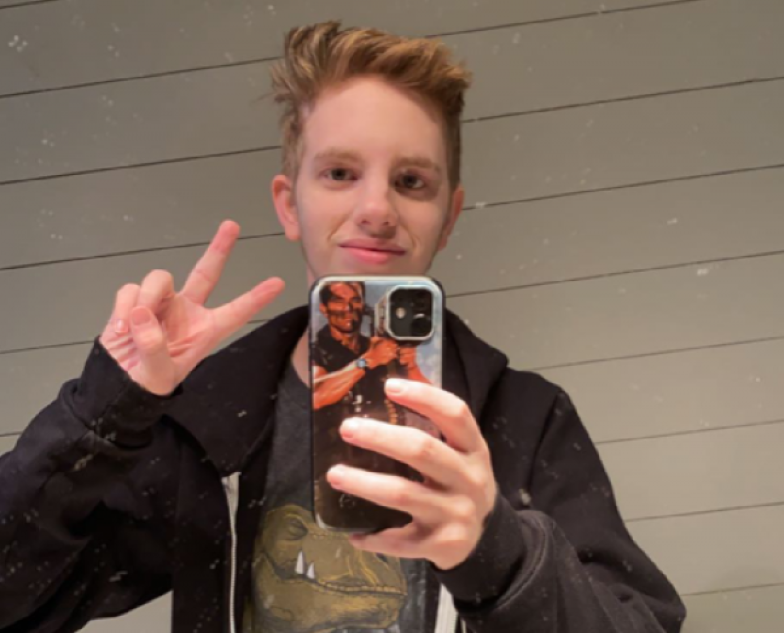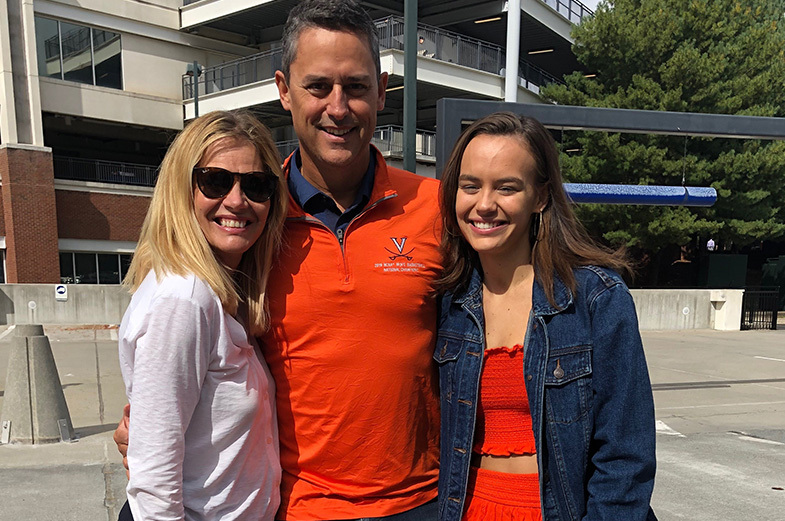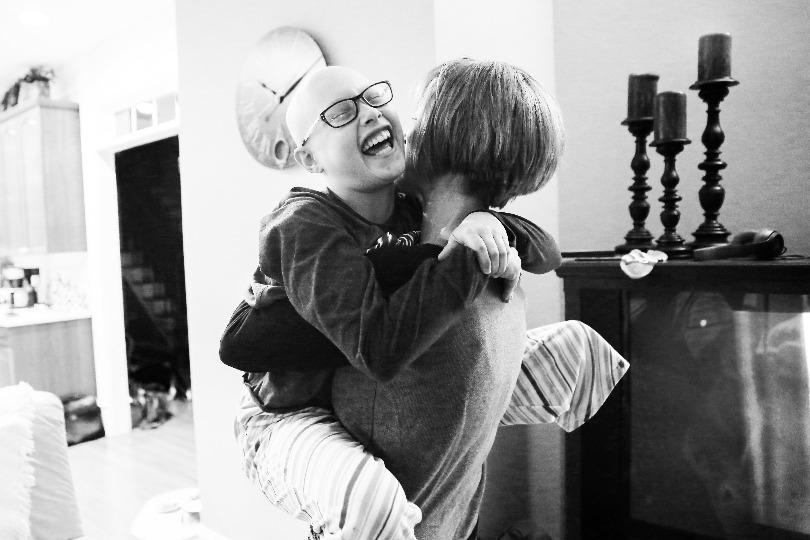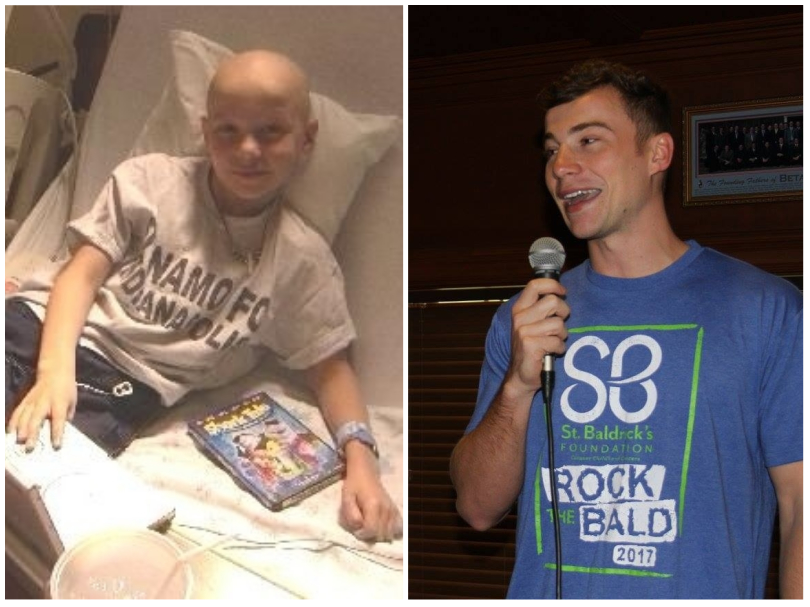Surviving Cancer – Through the Eyes of a 16-year-old
Want to know what it’s like to be a teenage survivor of childhood cancer? We asked 16-year-old Michael G. to share his experience, during National Cancer Survivor Month.

Creating a Future for Osteosarcoma Research
The St. Baldrick’s Foundation has always been committed to innovation. As the largest private funder of childhood cancer research grants in the world, it will be no surprise that we fund innovative science, but our commitment extends beyond that.
As part of our strategic plan, we challenged ourselves to find new innovative ways that we could partner with donors in order to help them realize their goals and get more dollars working to find better treatments and cures. We developed our own “venture philanthropy” program, one that allows a donor, or a group working together, to target in what they want to fund with more specificity and involvement than we have ever been able to do before.
The first group to join us in this new effort was the Osteosarcoma Collaborative. Led by Michael Egge, father to Olivia (who was diagnosed with osteosarcoma in February 2017), and current St. Baldrick’s Foundation board chair, Katherine Lugar, the Osteosarcoma Collaborative had a clear vision about what they wanted to accomplish through their fundraising and partnership with St. Baldrick’s. They wanted to fund research that needed support to push it over the finishing line – something that was very close to being ready to be put in a clinical trial and was specific to osteosarcoma research.
 Michael Egge, founding member of the Osteosarcoma Collaborative, sought to raise awareness and improve treatments and outcomes for children with osteosarcoma when daughter, Olivia, was diagnosed in February 2017.
Michael Egge, founding member of the Osteosarcoma Collaborative, sought to raise awareness and improve treatments and outcomes for children with osteosarcoma when daughter, Olivia, was diagnosed in February 2017.
Staying Positive, and Thriving, as a Young Survivor of Pediatric Cancer
What jumps out after talking with Shane Callaghan? His positivity. In a recent interview with Shane and his dad, Casey, Shane took center stage with his upbeat, can-do attitude – in spite of a lifetime worth of medical setbacks for a kid who is only 14. Shane has faced multiple treatments for osteosarcoma, which was first diagnosed in October 2015.
The following July, Shane was declared cancer-free. But the cancer in his left leg returned in March 2018. Following his relapse, chemotherapy led to an infection that severely damaged his kidneys. While his kidneys are better, they only function at 50% and are unable to handle heavy doses of chemo. On April 1, 2019, Shane’s left leg was amputated to remove the cancer and ultimately save his life.

A Famous Kid and A Pediatric Cancer Researcher Who Learned From Him – And What Those Lessons Might Mean for Future Pediatric Cancer Treatment
It was an inspirational story that was tough to miss: Tyler Trent, Purdue student and Boilermaker superfan, battling a cancer that would prove fatal, and doing so with grace, poise, and character that belied his 20 years. His story has been told during countless television pieces, and social media posts, and even a book. Behind the scenes, though, Tyler made a decision that could potentially mean lifesaving treatment in years to come for others faced with aggressive cancers. He agreed to be treated by a team of professionals that would try a precision oncology approach, with genomics front and center, to test what could potentially work for others in the future. The medical team hoped to learn ways to minimize the long-term effects from a wide range of cancers for those who survive.
One member of the team that worked with Tyler, and got to know his family, too, was Dr. Jamie Renbarger, a six-time St. Baldrick’s Foundation shavee and Division Chief of hematology/oncology at Riley Hospital for Children at Indiana University Health. During her nearly twenty years as a pediatric cancer doctor and researcher, Dr. Renbarger has learned a few things about genomics, about targeted, precision therapies – like those tried with Tyler – and about how research can lead to unexpected discoveries.
_785px.jpg) Dr. Jamie Renbarger has her head shaved at a St. Baldrick’s event.
Dr. Jamie Renbarger has her head shaved at a St. Baldrick’s event.
Dr. Alex Huang: Head Shaver, Cancer Fighter, Knight Commander
For the 11th consecutive year, Dr. Alex Huang will be shaving his head for kids’ cancer research. A pediatric oncologist and professor at Cleveland’s Case Western Reserve University (CWRU) and the Angie Fowler AYA Cancer Institute at University Hospitals Rainbow Babies & Children’s Hospital, he’s no stranger to the fight against childhood cancers.
In fact, as an accomplished cancer fighter who’s dedicated time – and hair! – to helping raise money for childhood cancer research, he’s the very definition of a “Rockstar Shavee”.

Dr. Alex Huang, winner of a St. Baldrick’s Innovation Award, will shave his head for an 11th time this year.
Meet the St. Baldrick’s 2019 Ambassadors!
Each year, the St. Baldrick’s Foundation picks five kids to serve as Ambassadors. In this role, they represent the thousands of kids affected by childhood cancers and remind us of the importance of supporting childhood cancer research.
Take any group of kids and they’ll all have their own way of talking, their own opinions on books, movies, and video games, their own favorite foods.
But there is one thing the St. Baldrick’s 2019 Ambassadors have in common: childhood cancers. Beyond that, they share the support of loving families and a desire to inspire others to raise money for childhood cancer research.

Our 2019 Ambassadors, from left to right: Aiden, Arianna, Sullivan, Gabby, and Brooke.
Vitrakvi: A New Way to Treat Cancer
A new drug approved by the Food & Drug Administration (FDA) is great news for childhood cancer patients.
The drug – known as larotrectnib, or Vitrakvi – is the first developed to target a key genetic driver of cancer, rather than a specific type of tumor. In this case, the drug targets a gene fusion called NTRK, found in some patients with many different types of cancer.

Dr. Federman, a St. Baldrick’s Scholar from 2009 to 2014, was directly involved in Vitrakvi’s development.
When a Child Dies of Cancer, What Should You Say? Here’s One Piece of Advice …
What should you say to someone whose loved one has died? Vicki Bunke has some simple advice that comes from heartbreaking experience — her 14-year-old daughter, Honored Kid Grace, died of bone cancer in March. Here’s what Vicki has to say …

Vicki’s daughter Grace grins and laughs in her mom’s arms. Grace was diagnosed with osteosarcoma when she was 11 years old and lost part of her leg to the disease. After her third relapse, she knew her disease was terminal but remained determined to experience everything life had to offer. Photo by Ashton Songer Photography
For 20 years, I have had the privilege of working as a school psychologist. I am honored to get up every morning and go to a job where I get to spend hour after hour interacting with young people. Sadly, this past spring, a young student who attended the high school where I work — and whom I loved dearly — died of osteosarcoma, a childhood bone cancer.
This student happened to be my 14-year-old daughter, Grace.
Survivor Grows Up to Fundraise for Kids With Cancer Like Him
Joey Chamness has grown up from being St. Baldrick’s very first Ambassador to become a longtime shavee and the VEO of his college event — helping fundraise for childhood cancer research to the tune of thousands of dollars. Why does he do it? Because this survivor knows firsthand how important it is to find better, safer treatments and cures for kids with cancer.

(Left) Joey rests and watches movies during his treatment for osteosarcoma. (Right) Now a survivor, Joey speaks during a St. Baldrick’s head-shaving event.
21-year-old Joey Chamness considers himself lucky.
Creating a Future for Osteosarcoma Research
The St. Baldrick’s Foundation has always been committed to innovation. As the largest private funder of childhood cancer research grants in the world, it will be no surprise that we fund innovative science, but our commitment extends beyond that.
As part of our strategic plan, we challenged ourselves to find new innovative ways that we could partner with donors in order to help them realize their goals and get more dollars working to find better treatments and cures. We developed our own “venture philanthropy” program, one that allows a donor, or a group working together, to target in what they want to fund with more specificity and involvement than we have ever been able to do before.
The first group to join us in this new effort was the Osteosarcoma Collaborative. Led by Michael Egge, father to Olivia (who was diagnosed with osteosarcoma in February 2017), and current St. Baldrick’s Foundation board chair, Katherine Lugar, the Osteosarcoma Collaborative had a clear vision about what they wanted to accomplish through their fundraising and partnership with St. Baldrick’s. They wanted to fund research that needed support to push it over the finishing line – something that was very close to being ready to be put in a clinical trial and was specific to osteosarcoma research.
 Michael Egge, founding member of the Osteosarcoma Collaborative, sought to raise awareness and improve treatments and outcomes for children with osteosarcoma when daughter, Olivia, was diagnosed in February 2017.
Michael Egge, founding member of the Osteosarcoma Collaborative, sought to raise awareness and improve treatments and outcomes for children with osteosarcoma when daughter, Olivia, was diagnosed in February 2017.
« Newer PostsOlder Posts »

 SBF
Tweets »
SBF
Tweets »